Buffalo Hosts the National GAR Convention
August 23-28, 1897
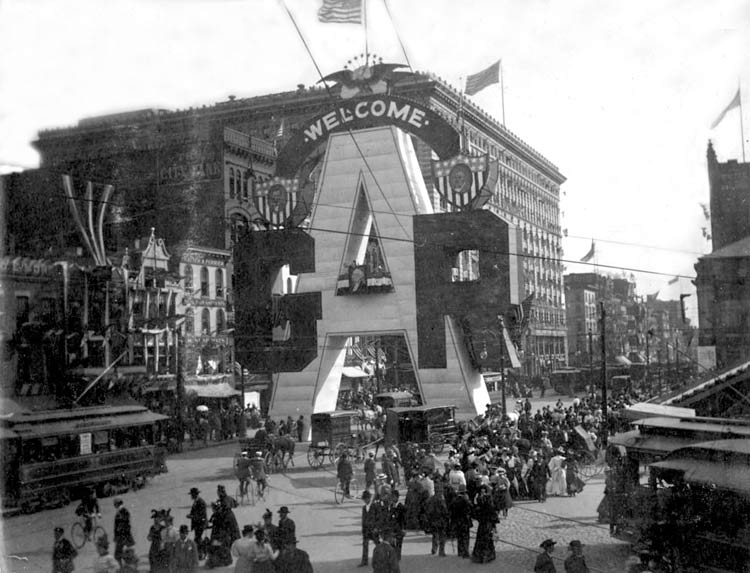
One of 3 street-spanning arches along Main Street's parade route. Image source: Internet
Buffalo secured the annual Grand Army of the Republic convention and welecomed nearly 50,000 veterans in August 1897. Two hundredforty-five special trains brought the visitors to the city. The city organized itself in every way to welcome and entertain the guests. Additional street cars were added to routes and in many cases cars passed in one-minute intervals to handle the traffic. As the Express related, "On the street-cars women as well as men rose and offered their seats. In stores, in hotels, in saloons all others fell back when the veterans appeared. 'They own the country, for they saved it,' said an old woman as she watched old soldiers move to the front, where civilians fell back."
Local citizens responded to a call for rooms with offers to house 60,000, prompting the organizers to plead that this was more than enough space. Some units were housed in schools. The weather for the entire encampment was perfect.
There were parades on Monday, Tuesday, Wednesday and Thursday of the encampment week by various groups that included nurses, Women's Relief Corps, ex-prisoners-of-war, Daughters of Veterans,and "soldiers of the future." The biggest was the Grand Parade that began at 10 a.m. Wednesday. Buffalo's 74th Regiment Band led the veterans and dignitaries (including Civil War veteran President McKinley) along a route that began at the Terrace, up Main Street to Chippewa, to Delaware, to North, to the Circle, Porter and ending at Prospect Park. With nearly 50,000 marchers, the parade lasted 6 hours. Over 250,000 Buffalonians and visitors were said to have watched from "windows, streets, and housetops."
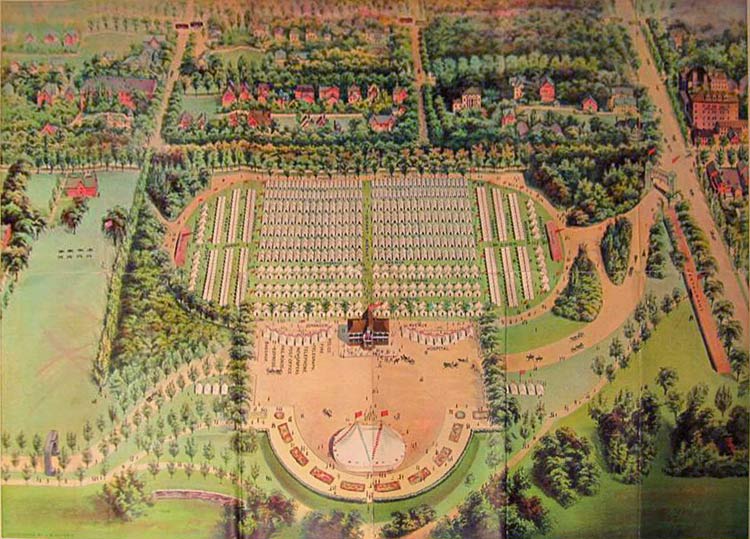
Illustration of Front Park as transformed into "Camp Jewett" Image source: Internet
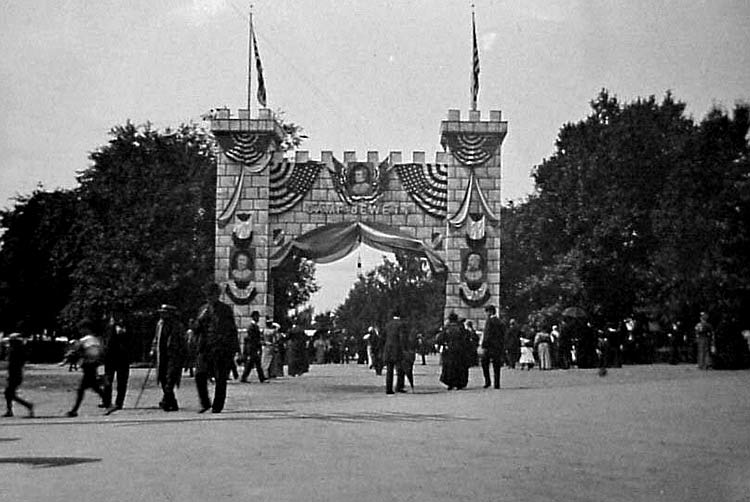
Entrance to Camp Jewett at Porter Avenue, Front Park. Another arch, in the shape of a horseshoe, stood at the far side of the park. Image source: private collection
The most-talked about topic among veterans after they praised the local hospitality was for "Camp Jewett." This temporary city of 1,350 tents with a huge reunion tent that would hold 4,000 and all the necessary support and supplemental tents was constructed at Front Park. Over 10,300 veterans registered to stay at the camp, named after the current Buffalo mayor, Edgar B. Jewett, a Civil War veteran and Brigadier General of the 8th Brigade of the New York National Guard.
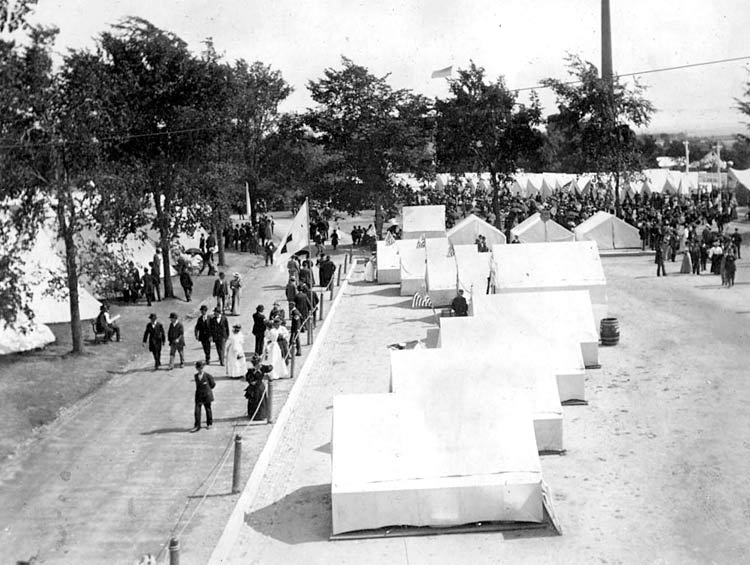
Camp Jewett. Image source: private collection
There was a dining hall served by a kitchen with two dozen mammoth ranges, for which quantities of dinnerware had to be delivered in hogsheads. Sutler's tents were on hand to provide blankets, pins, and lager beer which flowed freely throughout the week among the 182 posts assigned tents along temporary streets named after Union generals.
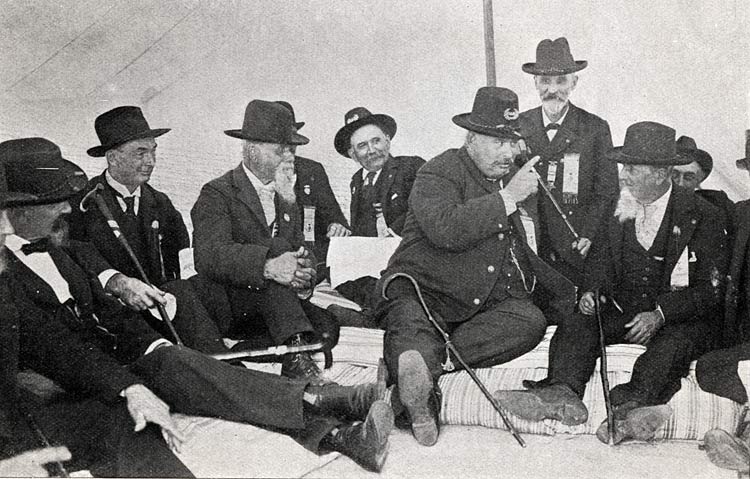
Each night, meetings of veterans called "camp fires" were held in Buffalo churches so that veterans could
tell stories, remember comrades who died, and share the horrors of combat still fresh after a generation. Image source: Buffalo Express
The last encampment of the GAR was held in Indianapolis, Indiana in 1949 and the last member, Albert Woolson, died in 1956 at age 109. Today, there are organizations carrying on the memory of the GAR: the Sons of Union Veterans of the Civil War, Auxiliary to the Sons of Union Veterans of the Civil War, Women's Relief Corps, Daughters of Union Veterans of the Civil War, and Ladies of the Grand Army of the Republic.
